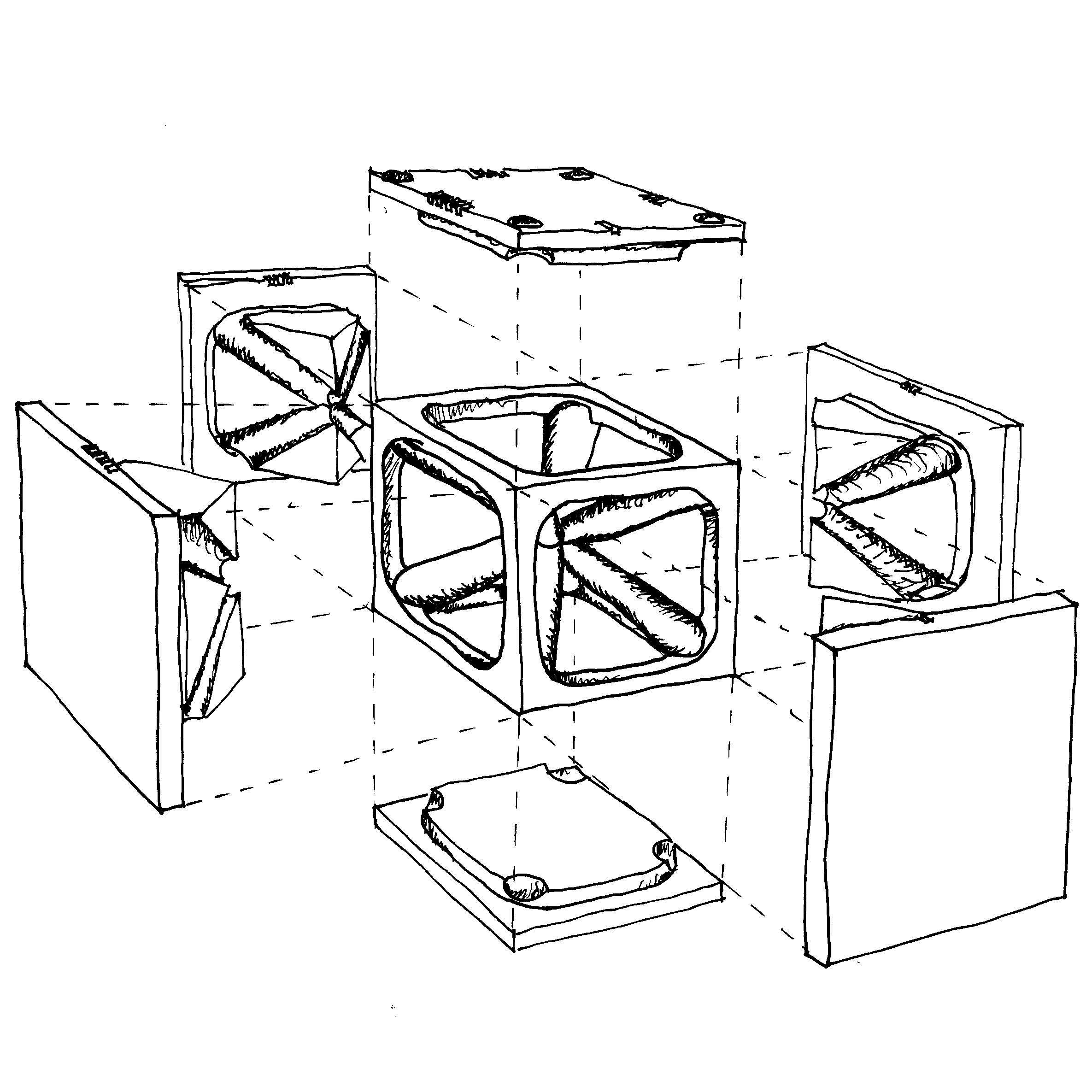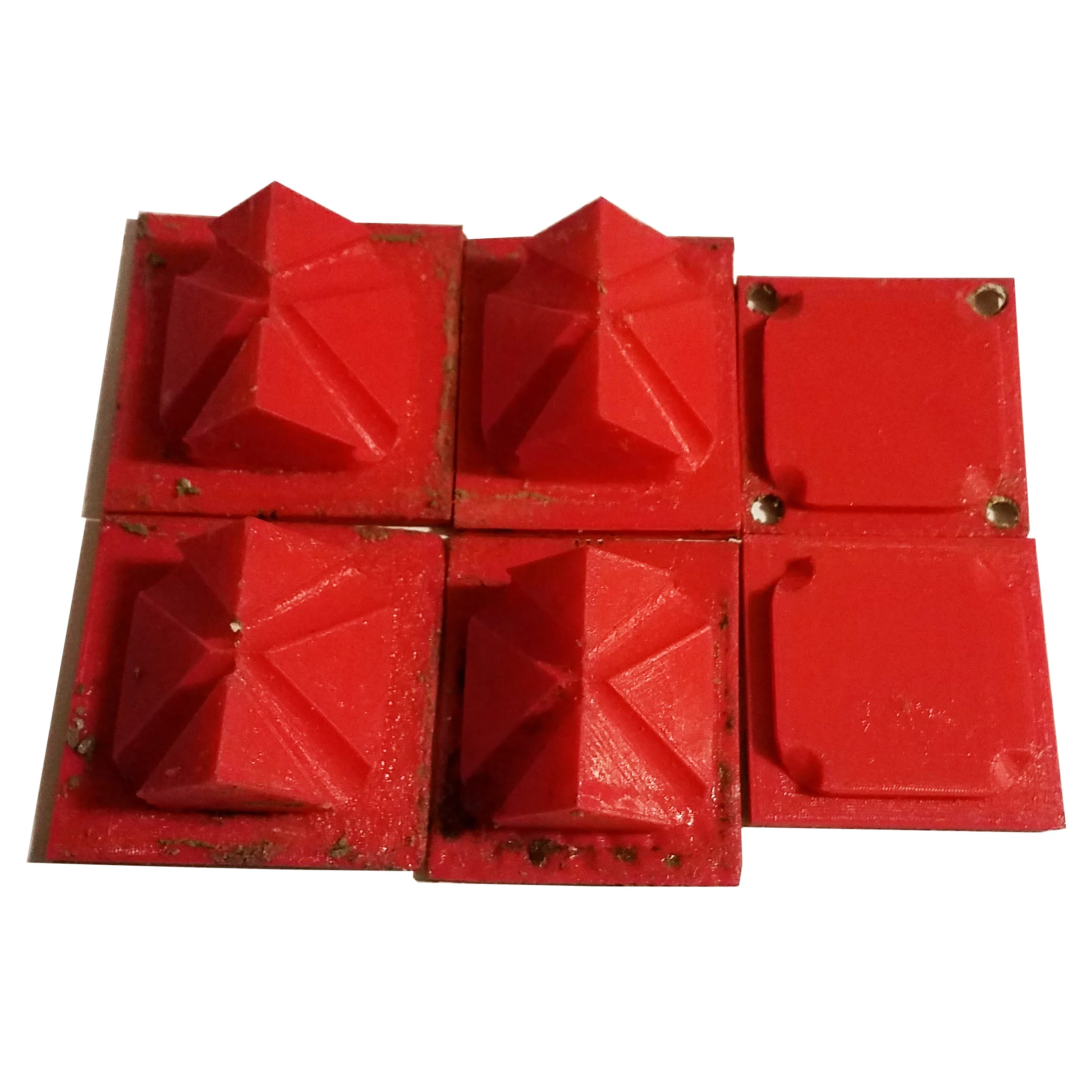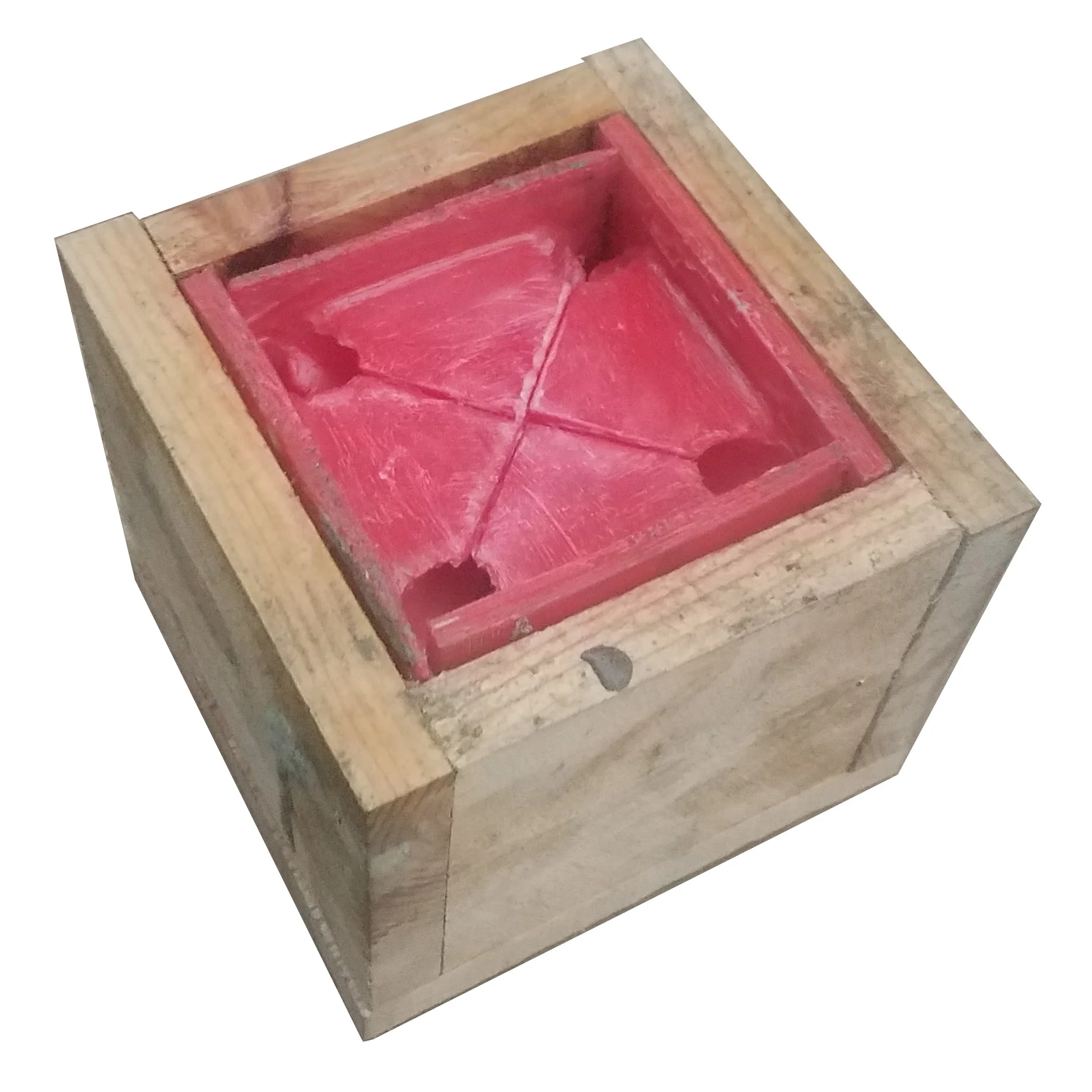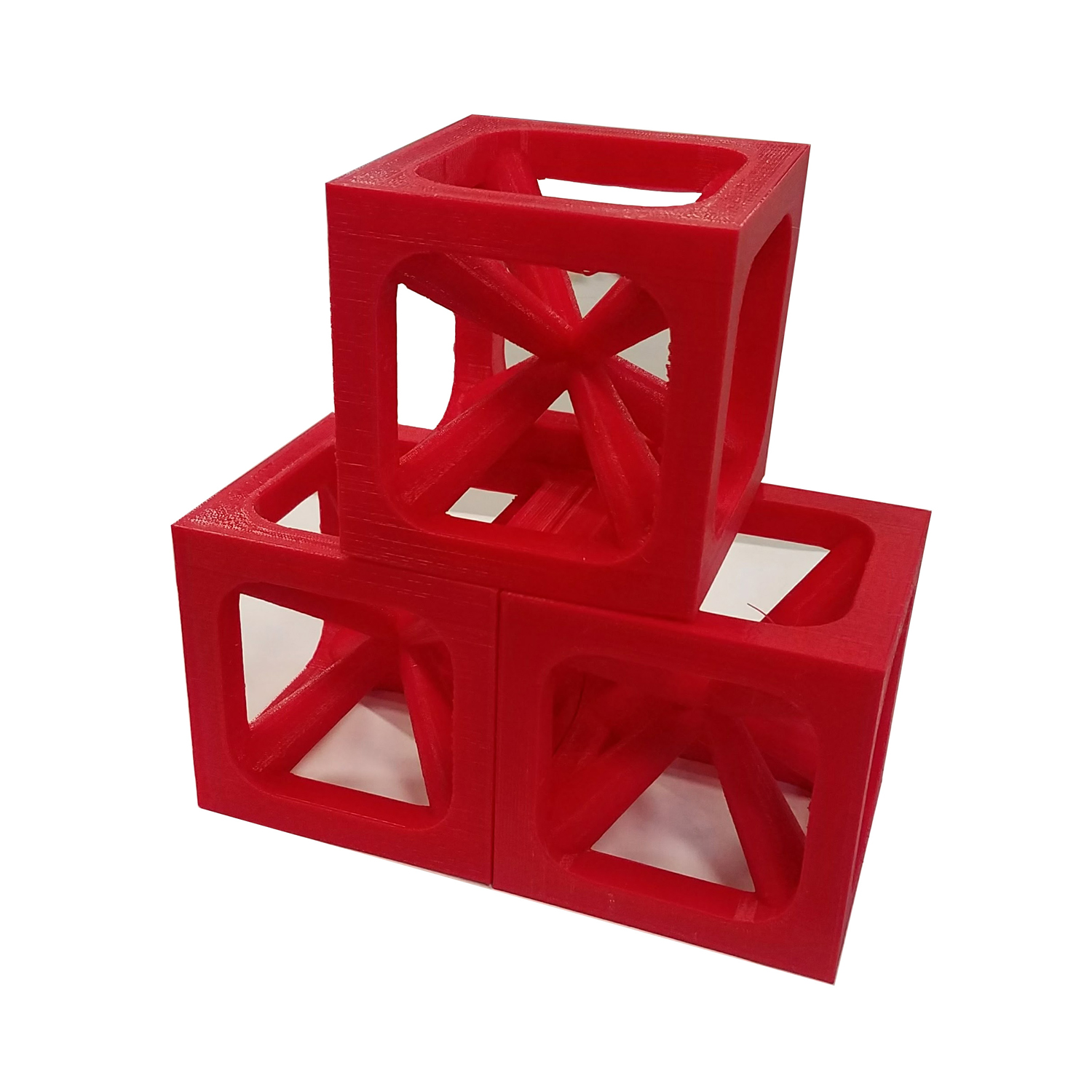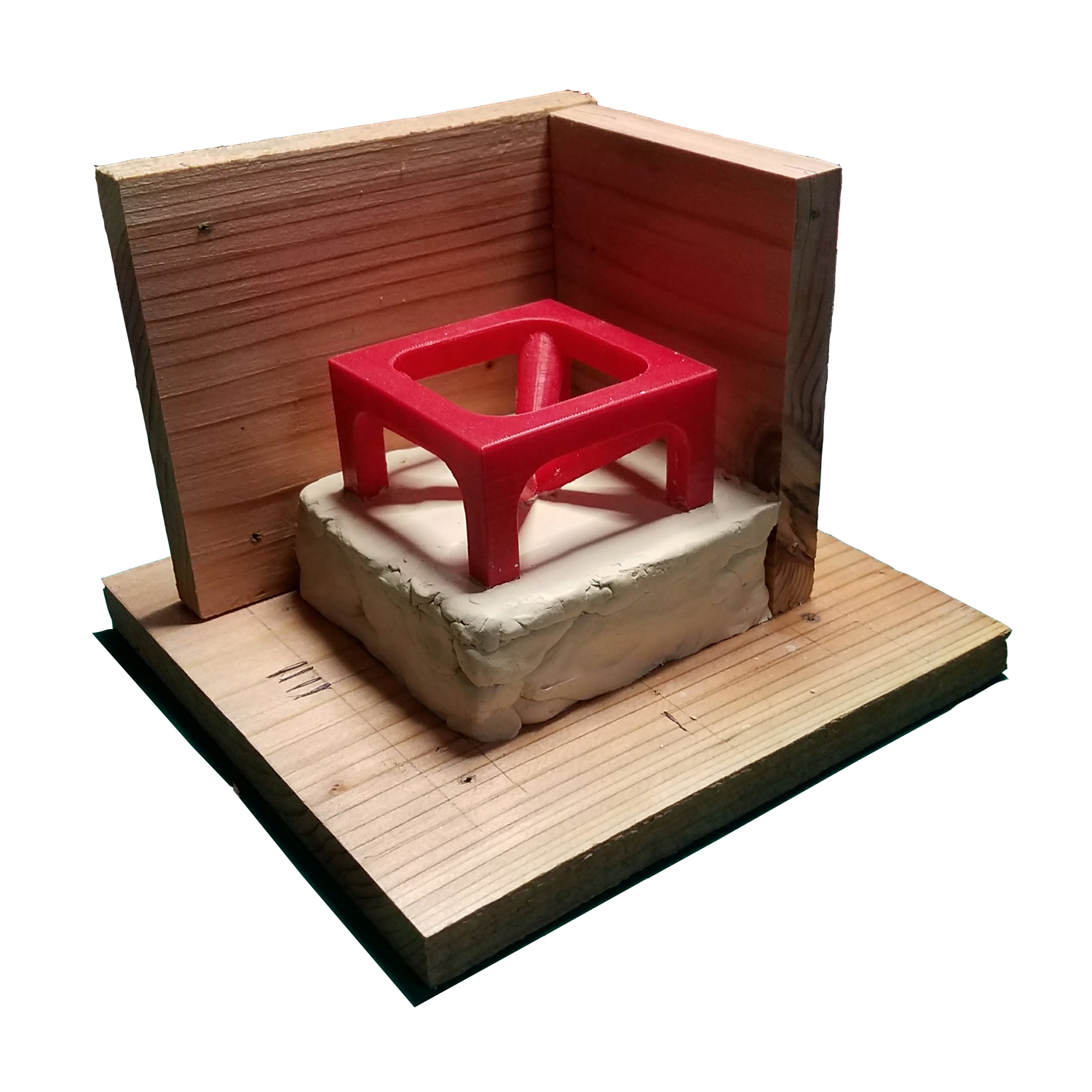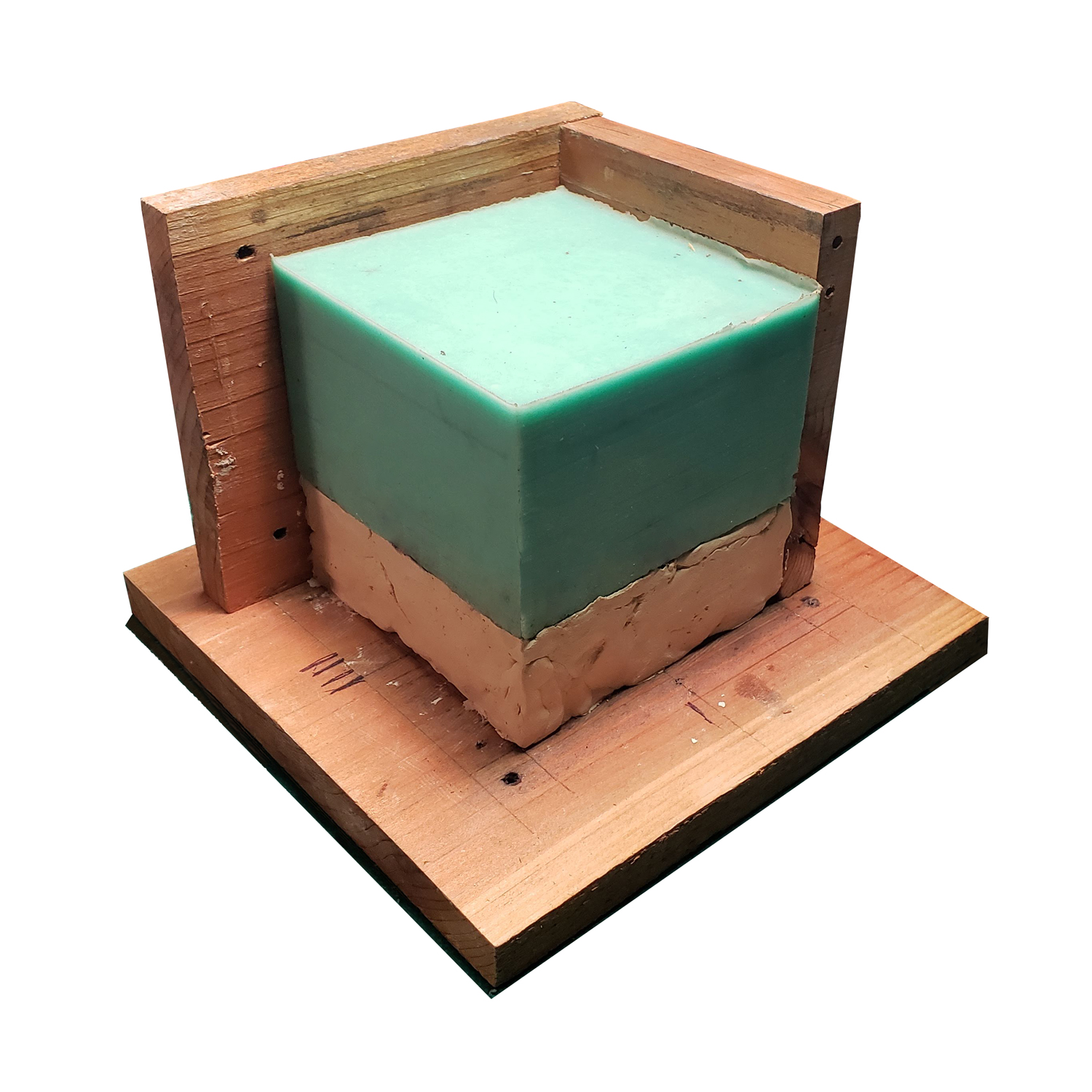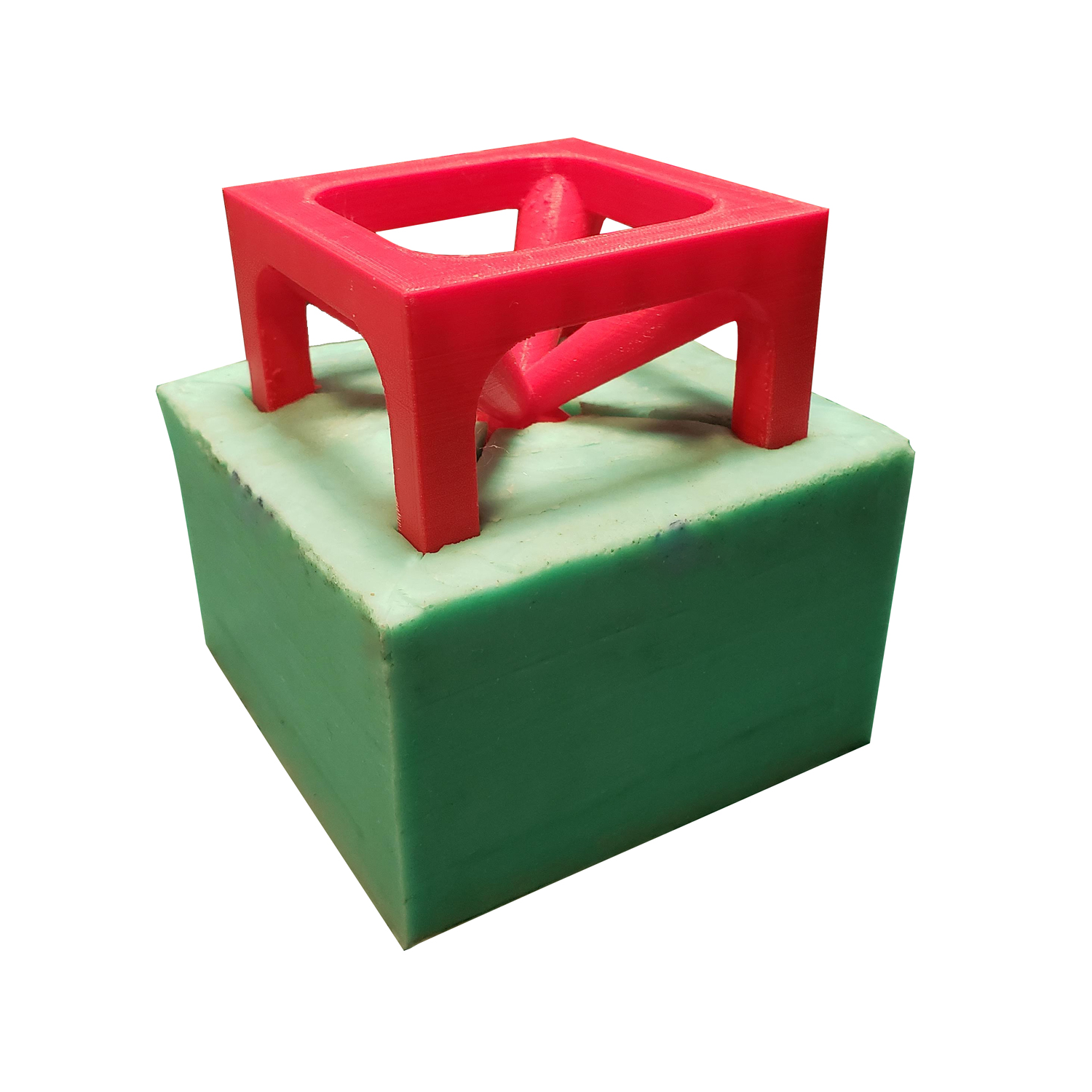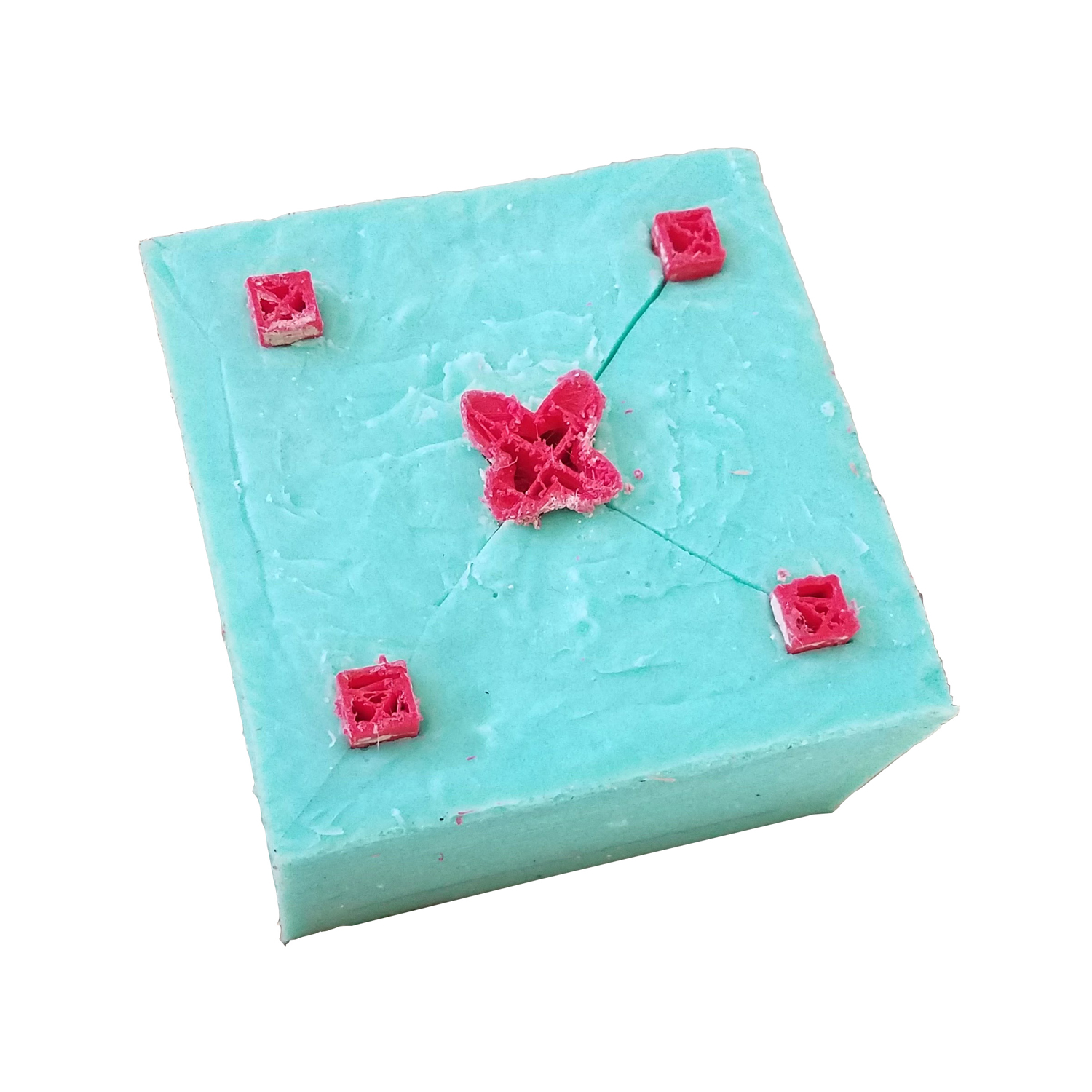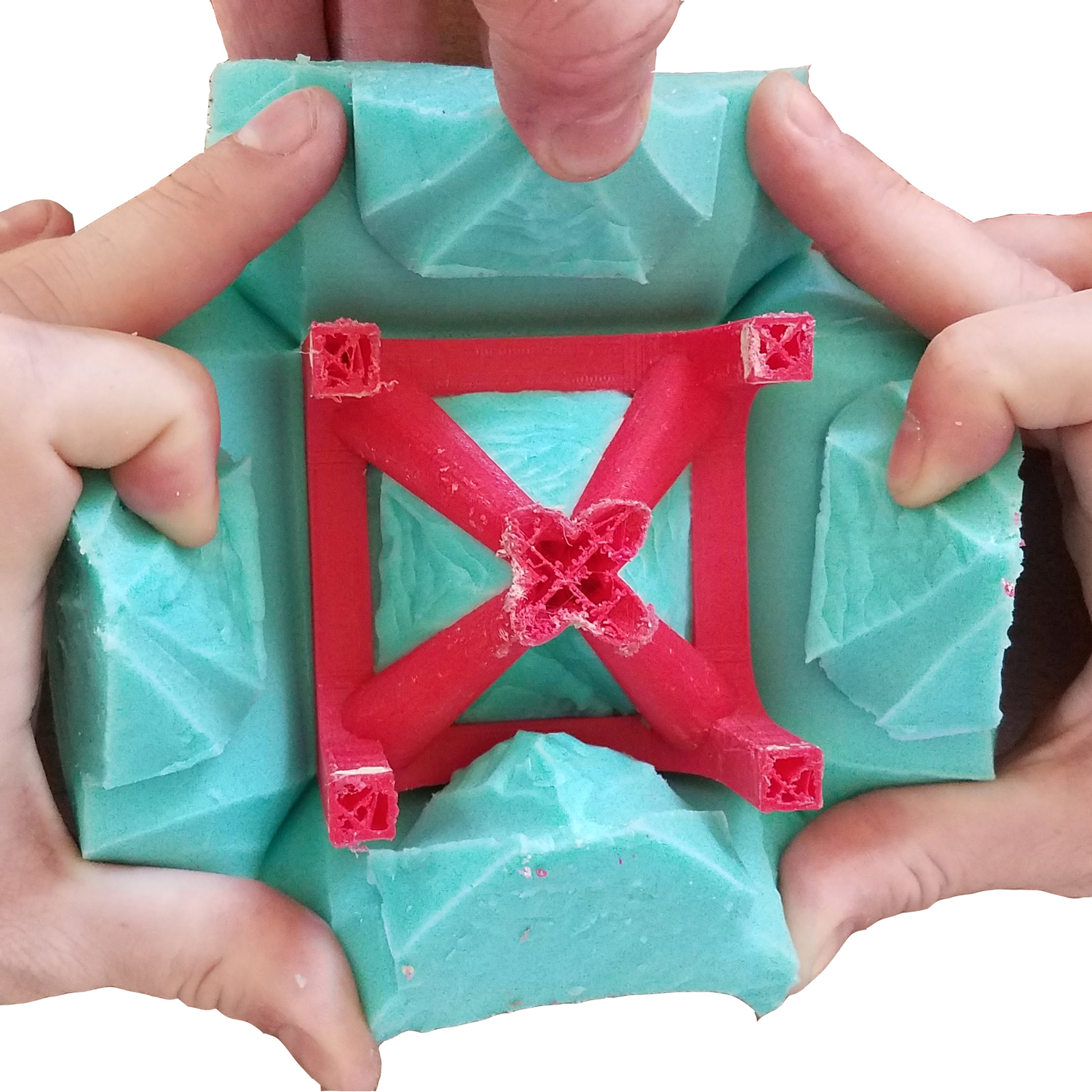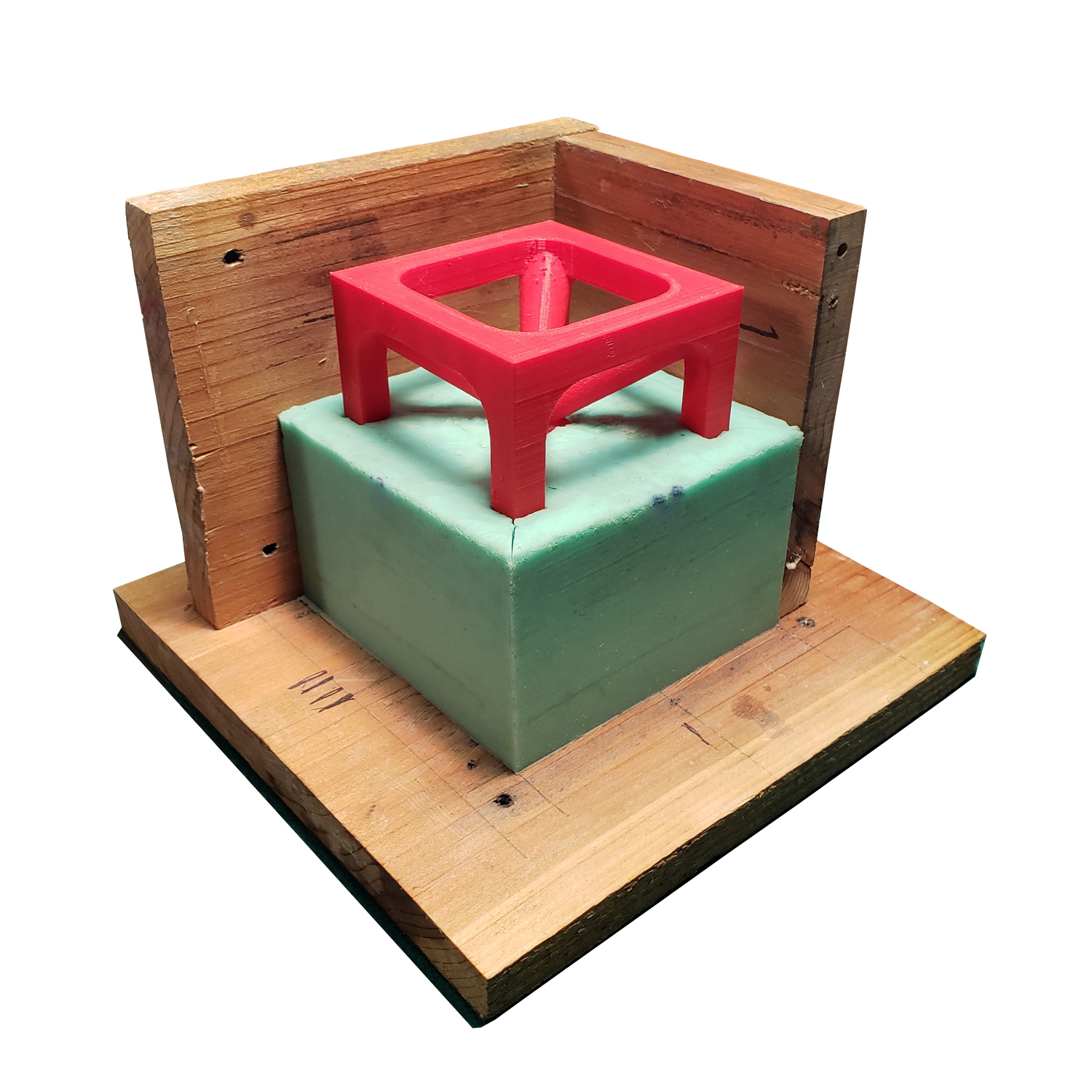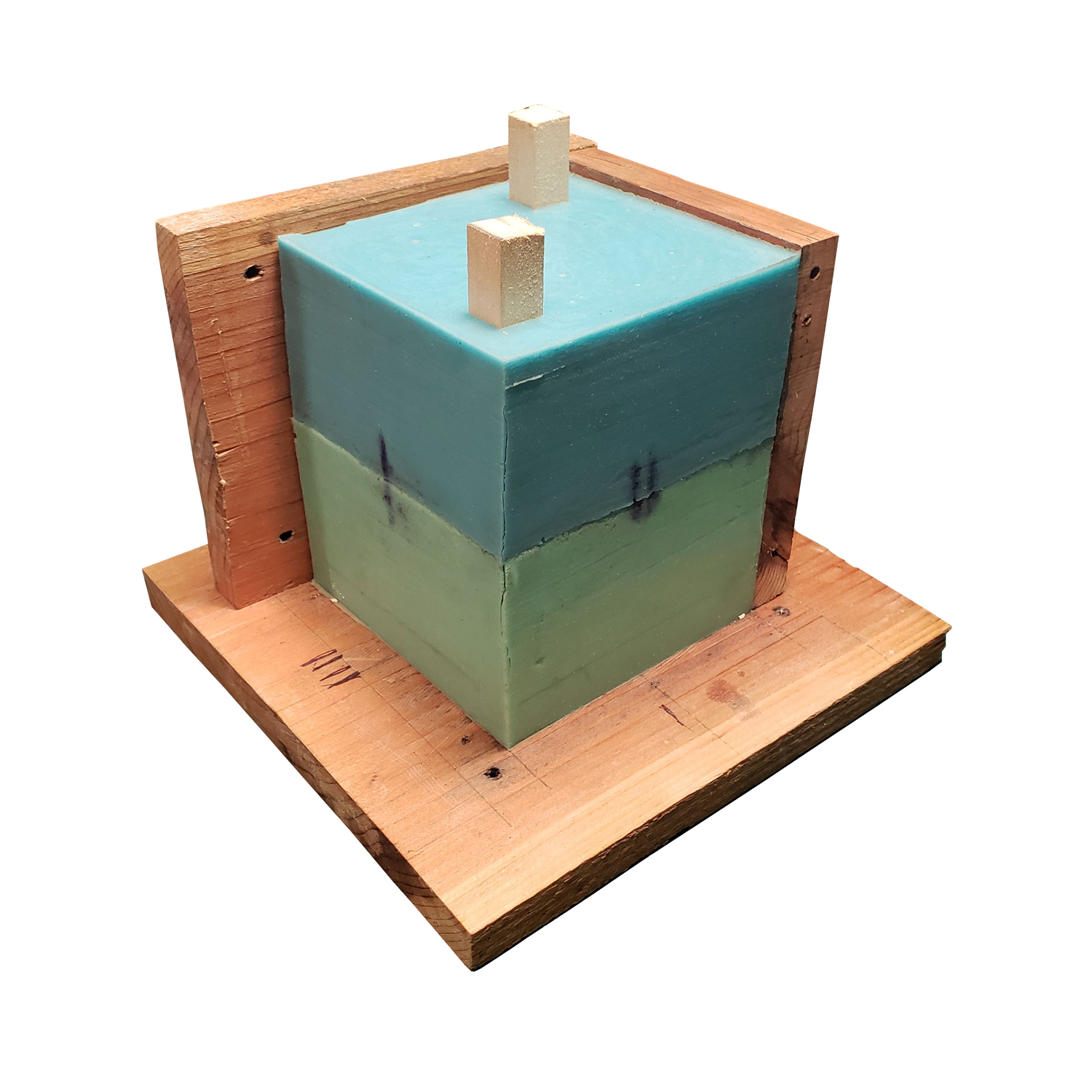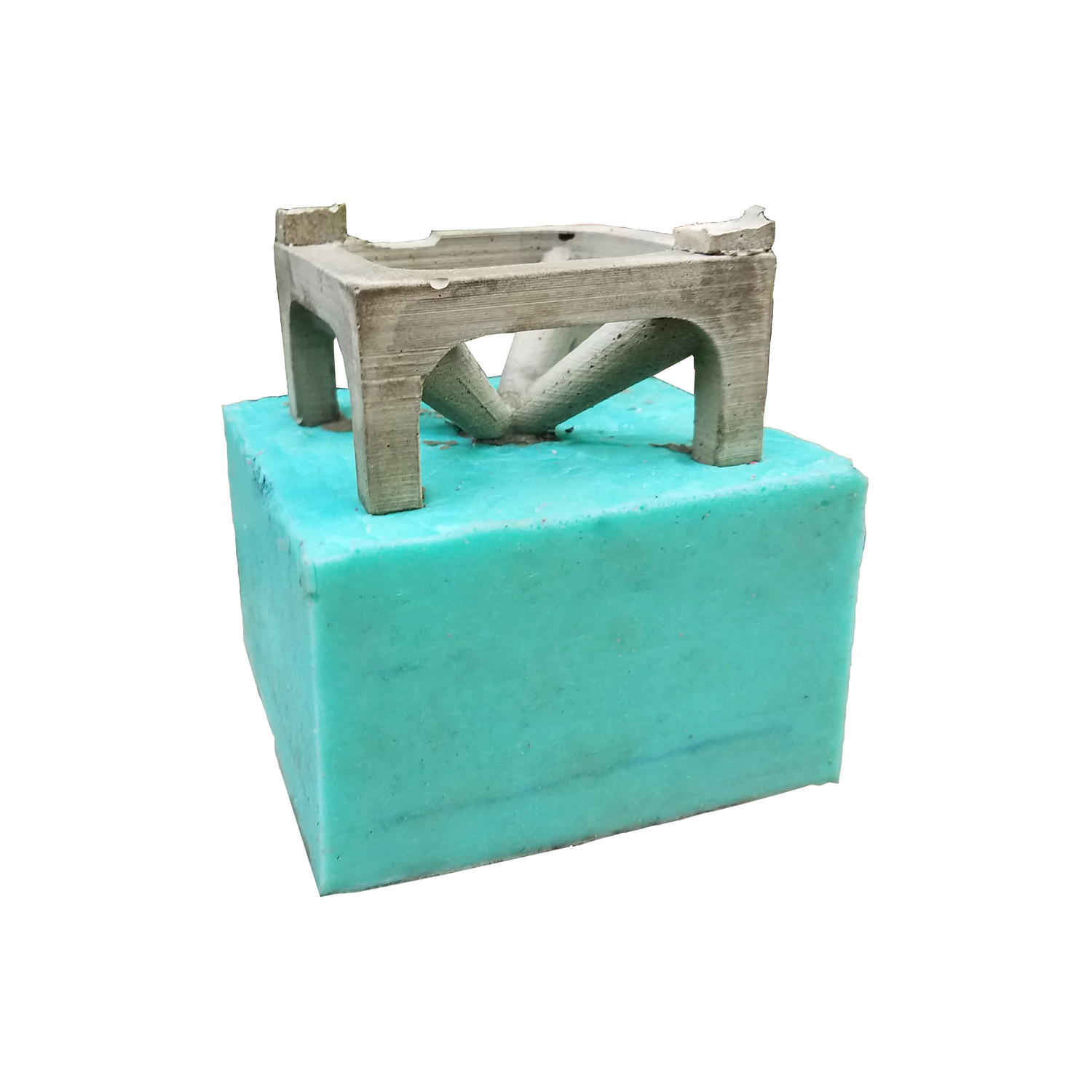cmu jax
arch 220 | spring 2018
instructor - Joseph sarafian | orange coast college
A three week exploration with concrete casting techniques with the goal of designing and creating an original Concrete Masonry Unit. This process sought to consider how rethought geometries could be utilized in conjunction with present casting techniques and materials to create a new modular building material. The final deliverable would be a modular unit design that could be manufactured repeatedly through the derived casting process. Inspiration for this work was gained via Erwin Hauer, and his work on Continua Architectural Screens & Walls, as well as Olga Mesa’s Harvard graduate school work, which was also inspired by Hauer.
process analysis - v1.0
The porous structure for the CMU Jax was derived digitally by subtracting the inner volume from a simple cube form. The centroid of the interior void was located and treated as a datum for the interior diagonal supports to converge upon. The first attempt to cast the concrete form was performed by 3D printing a six piece mold system that would be encased by a simple wooden box. Concrete casting was attempted two separate times using this method, resulting in sub-par results. Mechanical locking between the cured concrete and the porous nature of 3D print filament along with concrete seepage due to the non-watertight nature of the 3D printed forms at their surface junctions resulted in these results.
process analysis - v2.0
Through further analysis of casting techniques, inspired by Olga Mesa’s Harvard graduate school work, a dual mold silicone casting approach was derived. For this process multiple 3D printed jax would act as the negative volume for pouring the two silicone molds. Each of the two silicone molds were poured and then precisely cut to allow free access to the eventual concrete part castings. Once the two part silicone molds were formed, concrete was poured and cast numerous times to manufacture numerous porous concrete jax units.



